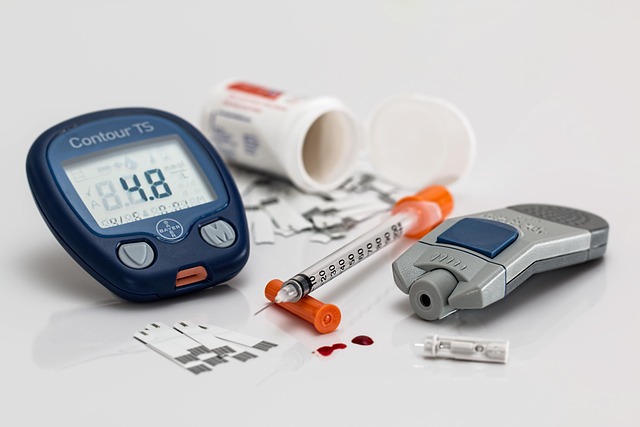Affordable Diabetes Care: Government-Backed Glucose Monitoring Programs in the USA (2025)
Effectively managing diabetes often depends on consistent blood sugar monitoring, particularly with continuous glucose monitoring (CGM) systems. While these devices can be costly, government-backed programs in the USA are making CGMs more accessible and affordable. Here’s how you can benefit from these initiatives in 2025.

What Are Government-Backed Glucose Monitoring Programs?
Government-backed glucose monitoring programs are initiatives designed to make diabetes management tools, particularly Continuous Glucose Monitors (CGMs), more accessible and affordable for patients. These programs typically involve partnerships between federal or state governments and healthcare providers or medical device manufacturers. The goal is to reduce the financial burden on individuals with diabetes while improving their overall health outcomes through better blood sugar control.
Key Programs Supporting CGM Accessibility
Several government-backed programs are working to increase access to CGMs in the USA. The Medicare CGM Coverage Expansion, implemented in 2023, has broadened eligibility criteria, allowing more seniors to qualify for CGM coverage. Additionally, the Medicaid CGM Access Initiative, launched in 2024, aims to standardize CGM coverage across all states, ensuring equitable access for low-income individuals with diabetes.
Eligibility and How to Apply
Eligibility for government-backed glucose monitoring programs varies depending on the specific initiative. Generally, individuals must have a diabetes diagnosis and meet certain criteria related to their insulin regimen or frequency of blood glucose testing. To apply, patients typically need to:
-
Obtain a prescription from their healthcare provider
-
Complete an application form (available through Medicare, Medicaid, or specific program websites)
-
Provide supporting documentation, such as medical records or insulin usage logs
-
Submit the application to the appropriate program administrator
It’s important to note that eligibility requirements may change, so it’s advisable to check with the specific program or your healthcare provider for the most up-to-date information.
Benefits of Continuous Glucose Monitors (CGMs)
Continuous Glucose Monitors offer numerous advantages over traditional finger-stick blood glucose testing. These benefits include:
-
Real-time glucose readings: CGMs provide glucose readings every few minutes, allowing for better tracking of blood sugar trends.
-
Improved diabetes management: With more frequent data, patients and healthcare providers can make more informed decisions about treatment adjustments.
-
Reduced hypoglycemia risk: CGMs often feature alerts for high and low blood sugar levels, helping prevent dangerous hypoglycemic episodes.
-
Enhanced quality of life: Less frequent finger sticks and improved glucose control can lead to better overall well-being for individuals with diabetes.
-
Data sharing capabilities: Many CGMs allow users to share their glucose data with caregivers or healthcare providers, facilitating remote monitoring and support.
Steps to Access These Programs
To take advantage of government-backed glucose monitoring programs, follow these steps:
-
Consult your healthcare provider: Discuss whether a CGM is appropriate for your diabetes management and obtain a prescription if necessary.
-
Research available programs: Investigate federal programs like Medicare and Medicaid, as well as state-specific initiatives.
-
Check eligibility: Review the criteria for each program to determine if you qualify.
-
Gather required documentation: Collect necessary medical records, prescriptions, and other supporting documents.
-
Submit your application: Complete and submit the required forms to the appropriate program administrator.
-
Follow up: Stay in contact with the program administrators and your healthcare provider to ensure your application is processed and approved.
Cost Considerations and Program Comparison
While government-backed programs aim to make CGMs more affordable, it’s important to understand the potential costs and coverage options. Here’s a comparison of some key programs:
| Program | Coverage | Estimated Out-of-Pocket Costs | Eligibility |
|---|---|---|---|
| Medicare CGM Coverage | 80% of approved amount | 20% coinsurance, subject to deductible | Medicare beneficiaries with diabetes using insulin or with a history of problematic hypoglycemia |
| Medicaid CGM Access Initiative | Varies by state, typically full coverage | Minimal to no cost | Medicaid-eligible individuals with diabetes, specific criteria vary by state |
| Veterans Affairs CGM Program | Full coverage | No cost for eligible veterans | Veterans with diabetes who meet specific clinical criteria |
| State-Specific Programs | Varies by program | Varies, often reduced costs | Residents of participating states with diabetes, criteria vary |
Prices, rates, or cost estimates mentioned in this article are based on the latest available information but may change over time. Independent research is advised before making financial decisions.
In conclusion, government-backed glucose monitoring programs are making significant strides in improving access to CGMs for individuals with diabetes in the USA. By understanding these initiatives and following the appropriate steps, patients can potentially benefit from more affordable and effective diabetes management tools. As technology continues to advance and programs evolve, it’s crucial to stay informed about the latest opportunities for accessing these valuable devices.
This article is for informational purposes only and should not be considered medical advice. Please consult a qualified healthcare professional for personalized guidance and treatment.




